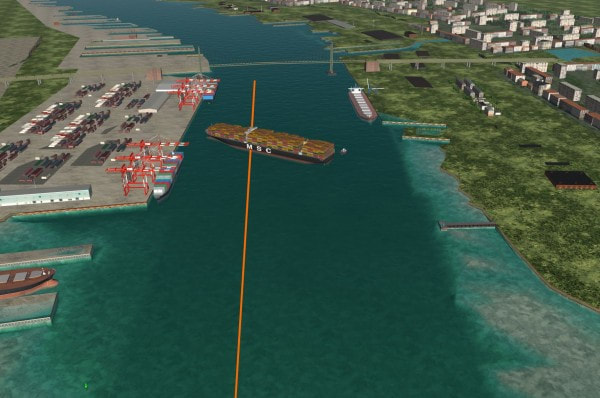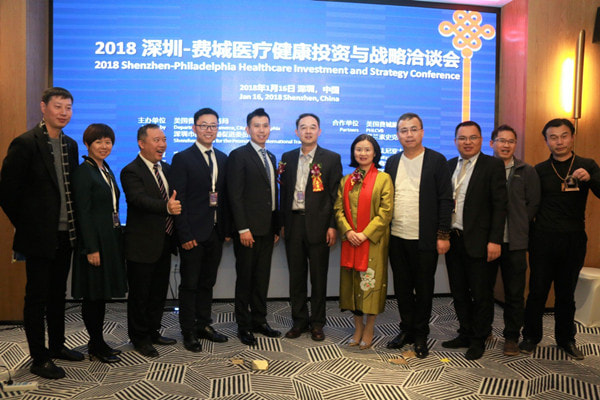|
Via Global Trade Matters, Written by Ralph Carter This week and last negotiators from the United States, Canada, and Mexico met in Montreal to update the regional North American Free Trade Agreement. While there has been considerable progress in many areas, there are some issues yet to be resolved. One area that FedEx is extremely interested in relates to the growth of the digital economy and ecommerce, and the free movement of data across borders. As the founder of FedEx, Fred Smith noted years ago, the information about a package is as important as the package itself. We couldn’t run our global express network, or provide up-to-the-minute tracking without the ability to move data around the world. Consider all of the data required to process your single ecommerce order: from the data architecture of each website to the data required to place the order, pay for it, select it from a warehouse, place it on the right plane or truck and then deliver it to the right address, and possibly return it. NAFTA gives us the opportunity to enact modern rules that protect the flow of this data across borders. While US negotiators are working to ensure the free flow of data across borders they are also working to simplify the physical movement of goods by asking Mexico and Canada to raise their de minimis levels. De minimis is the value below which a good enters a country duty free. In the US goods valued below $800 enter duty free. But in Mexico the limit is about $50 and in Canada it is only about $15. That means Canadian residents are charged duty and taxes on very low priced ecommerce products from the US or Mexico. This huge disparity puts US ecommerce vendors, and FedEx customers, at a significant disadvantage when compared to their Mexican and Canadian competitors. Narrowing this gap will help small businesses in the US export more to Canada and Mexico. It will also help Mexican and Canadian consumers by giving them more choice and better prices. For FedEx, raising de minimis levels and simplifying the movement of low-value goods across borders is a priority in these negotiations. Now is the time to address this disparity and create a globally competitive North American e-commerce marketplace. Ralph Carter is managing director for legal, trade, and international affairs at FedEx Express. Original Article Via Global Trade Magazine  A new report prepared by Trade Partnership Worldwide for the Business Roundtable finds that a termination of the North American Free Trade Agreement (NAFTA) would have significant negative impacts on the US economy and US employment. Termination would re-impose high costs of tariffs on US exports and imports, which would reduce the competitiveness of US businesses both domestically and abroad. It’s a subject worth considering, as President Donald Trump regularly threatens to pull the US out of the trade accord and negotiations aimed at revising the agreement hit multiple speed bumps. US exports would drop, to Canada, Mexico and globally, as US output becomes more expensive and US become less competitive. Foreign purchasers would shift away from US goods and services in favor of lower-cost goods and services made elsewhere, in Asia. Related Content: US Transpacific Ocean Cargo Continues to Trend Eastward“These efficiency losses and trade shifts,” says the report, “would have an impact on US production of both goods and services, and thus also on US employment.” The report estimates that, if NAFTA is terminated and most-favored nation (MFN) duties are re-imposed for US trade with Canada and Mexico, the level of US output would fall 0.6 percent below levels that would prevail if NAFTA were in effect in each of the first five years after termination. Lower output will translate to less employment: 1.8 million workers would lose their jobs in the first year. In the longer term, terminating NAFTA would have negative impacts on jobs, exports, and output after new supply chains are formed. The report estimates that US GDP would remain depressed by over 0.2 percent, permanently. Terminating NAFTA would cause US GDP to drop from levels reached in 2016 by between 0.6 percent and 1.2 percent for each year the agreement is no longer in effect during the first five years. up to and including the first one to five years after termination. This represents a hit to US economic output of between $119 billion and $231 billion. The output declines would impact nearly every sector of the US economy. Services sectors would be hit the hardest because they are the largest component of the US economy and would suffer as manufacturing, agriculture, and energy also decline. Lower incomes and higher unemployment means reduced spending power for the nation’s 126 million households, at a rate of between $654 to $1,264 per household per year in the first five years after NAFTA’s termination. As households pull back on spending, services like education, entertainment, and healthcare will feel the brunt. Goods exports will fall across all sectors, prompting investors to shift capital away from the most adversely impacted sectors—and out of the US as a whole. Reduced output would hit employment, with most job affecting workers in lower-skilled occupations, including production workers in manufacturing and agriculture and lower-wage workers in services industries. Wages would also decline, by 0.9 percent to 1.9 percent. The drop in US output will be attributable in part to a decline in US exports to the world. US producers will be less competitive in global markets, the report found, and imports will also drop, thanks to their higher costs. Among US states, California would be hit hardest by the termination of NAFTA in terms of economic output with a loss of $16.7 billion. Withdrawal from NAFTA would also reduce California’s exports to Mexico and Canada by nearly $10 billion and would cost the state over 215,000 in the first year. In the less egregious of two scenarios presented in the report, New York and Texas would each lose almost $10 billion in economic output in the short to medium term. Texas and Michigan would each lose $4.4 billion in exports to the world while South Carolina and Ohio would each lose around $2 billion. Without NAFTA, Texas will lose 154,000 jobs in the short to medium term, New York will lose 117,000 jobs, and Florida, 110,000. “Terminating NAFTA would be expensive to the United States by any measure,” the report concludes. “Terminating NAFTA would permanently reduce U.S. economic output, exports and employment,” but would be a win for trading partners outside the NAFTA region. “As supply chains shift to take advantage of relatively lower-cost production opportunities in non-NAFTA countries,” the report explains, “those economies would grow faster and, with that growth, expand employment.” Original Article Via PhilaPort Philadelphia, PA January 29, 2018 — As the Port’s $392 million Main Channel Deepening Project approaches 100% completion, cargo volumes in The Port of Philadelphia are surging. In 2017, container cargoes grew by 19%, leading all ports on the U.S. Atlantic seaboard. The growth is especially significant since the Port is busy implementing its $300 million capital improvement plan. “We have a lot of exciting developments all occurring at the same time, record cargo growth, preparation for the deepened channel and the arrival of our new cranes,” said Jeff Theobald PhilaPort CEO and Executive Director. “It’s all very good news and we want to make sure we support the surge in cargo with proper training and landside and infrastructure improvements.” Next month the first two of a total of four super post-Panamax cranes are due at the Port’s Packer Avenue Marine Terminal (PAMT). Ocean carriers are already supporting the growth by scheduling Ultra Large Container Vessels (ULCV) to call the Port. Several 11,000 TEU vessels started calling PAMT in December and 12,200 TEU vessels are expected in the coming days. Recently, the Board of Directors of The Port of Philadelphia granted funds to the Pilots’ Association for the Bay and River Delaware to train for these new class of vessels 12,000–14,000 TEUs. “Our investment in this vital infrastructure asset continues to yield significant economic returns across the Commonwealth,” said Governor Tom Wolf. “The near completion of the channel deepening project combined with record-breaking activity at PhilaPort means more jobs and an economic advantage allowing Pennsylvania to compete globally.” The five-day simulation training program occurred at the Maritime Institute of Technology and Graduate Studies (MITAGS). The pilots were joined by docking pilots and tug operators including personnel from Moran Towing Corporation, McAllister Towing, Inc. and Wilmington Tug, Inc. During the five-day simulation, the participants:
The long-anticipated completion of the Delaware River Main Channel Deepening Project from 40’ to 45’ is drawing to a close. In March, the Port expects announcements on a phased approach which will allow vessels to utilize increased arrival and departure draft depth. Original Article Via Guangdong China Philadelphia, a pilot city for life science in the United States, is attracting investment for its promising healthcare sector from China. In a recent meeting in Shenzhen, Samuel Chueh, international business investment manager from the Department of Commerce of Philadelphia, introduced the efforts and achievements of the city in healthcare and the rising business opportunities in international cooperation. "We look forward to a closer cooperation with Shenzhen, and welcome Chinese healthcare companies to tap the business opportunities in Philadelphia," said Chueh. According to the official figures, there are 198 hospitals and four national cancer research centers in Philadelphia. Its healthcare innovation receives more than $1 billion each year from the National Institute of Health. The government statistics also indicate that the greater Philadelphia area annually consumes more than $10 billion in research and development in the healthcare field with a total output value of nearly $25 billion. With more than 100 universities, seven medical schools and 36 academic and research institutions, the city can provide quality talent pool for scientific and technological innovation, said Chueh. In fact, there are more than 5,000 technology companies and at least 30 business incubators in Philadelphia, which is the top city of choice for science and technology investment with its return on capital higher than other US cities like New York, Boston and Austin, he noted. He made the remarks at the 2018 Shenzhen - Philadelphia Healthcare Investment and Strategy Conference, which was held in mid-January in Shenzhen. Tom Wolf, governor of Pennsylvania, where Philadelphia is located, the city Mayor Jim Kenny, and the city's Council President Darrell L.Clarke, sent congratulation letters and compliments to the conference, expressing that there would be a substantial leap forward in China-US healthcare cooperation and the strong desire to invite Chinese government agencies and businesses to come to Philadelphia for business trips and investments. Luo Wensheng, representative from Shenzhen Council for the Promotion of International Trade, said that Shenzhen, as a pioneer city of influential scientific and technological innovation in the country, attaches great importance to the innovation and development of original technologies, especially in healthcare technology R&D and industrialization. He expressed his hopes that Shenzhen and Philadelphia will have in-depth and extensive strategic cooperation in the healthcare sector. Li Wei, founder and chairman of Cipher Ground, a US non-profit organization that organizes the event, said that as an international high-tech transformation platform, Cipher Ground is dedicated to creating and serving innovative companies by integrating technology, talent and capital. He also said that the company is building a bridge between China and the United States to transform healthcare technologies and promote investment cooperation. Original Article Via The Philadelphia Business Journal  By Natalie Kostelni – Reporter, Philadelphia Business Journal Jeff Hornstein, who worked in the Philadelphia controller’s office for the last five years, has been named the new executive director of the Economy League of Greater Philadelphia. Hornstein replaces Steve Wray, who left the Economy League last summer after 11 years in its top post and another 11 years prior to that overseeing its policy and research work. Hornstein comes to the Philadelphia-based organization with a diverse background that, he said, gives him a unique perspective when trying to tackle some of the business development, workforce and infrastructure issues facing the 11-county region. “It melds everything that I have done,” Hornstein said. After earning a doctoral degree in U.S. history and business and economic history, he spent nearly a decade in the labor movement. Hornstein was first with the American Federation of Teachers and then went on to become an organizing coordinator for the Service Employees International Union. There, he focused on organizing janitors and security guards working in commercial properties throughout Philadelphia. Read more. Via the U.S. Department of State The Department of State launched its new Travel Advisories program during an on-record briefing on on January 10, 2017. The Bureau of Consular Affairs recommends travelers check the Travel Advisories for your intended destination as a first step in planning travel abroad. Click here for a complete list, or utilize the world at a glance color-coded map as a resource for international travel.
"This is, in our world, a very exciting day....We are launching our new travel advisory program. " "This is a revamping of our Consular Information Program – which, as you all know, because you follow these things, is the cornerstone of our efforts to keep U.S. citizens safe while they travel or live abroad." "The purpose of the Consular Information Program does not change. It’s again, to provide information to people to make timely decisions about their travel plans and their activities while they’re overseas." -Michelle Bernier-Toth Bureau of Consular Affairs Acting Deputy Assistant Secretary For Overseas Citizens Services View the full briefing transcript here. One look at the list of the 10 U.S. seaports with the greatest increase in the value of their import trade this year, and you can find validation for the Federal Reserve's decision to raise interest rates this year and continue to do so in 2018. The list also aligns with recent strong employment figures and buoyant consumer confidence.
The list also suggests that long-dormant inflation, which has befuddled the Fed's governors, economists and lesser pundits alike, might spring into action next year. One question will be whether it's a manageable inflation. Here are the 10 ports whose imports have increased the most through the first 10 months of 2017, the most recent data available from U.S. Census, as analyzed by World City, the company where I serve as president.
That these ports have seen the value of their trade increase the most tells you at least three things:
In successive reports, I will look at the top 10 airports and the top 10 border crossings. In three previous columns, I focused on the top 10 airports, seaports and border crossings for export trade. Four of the above ports appeared on that list as well: Port Houston ranked No. 1 on the export side as well, the Port of Los Angeles ranked No. 4, the Port of New Orleans ranked No. 6 and the Port of Savannah ranked No. 9. All told, there are more than 450 "ports" for goods to enter and exit the United States. Total U.S. exports are up 6.13% through the first 10 months of the year. Total imports are up slightly more, 6.75%. Exports by border crossing -- this includes truck, rail and, in some cases, pipeline -- are up a relatively slight 2.02%. Exports via air, whether via so-called "belly" cargo on passenger flights or on dedicated freighters, are up 6.11% while ocean-bound exports ocean are up 10.98%. Border crossing trade, by value, makes up 36.33% of all U.S. exports, the largest percentage of the three. Most of that trade is with just two countries, NAFTA partners Canada and Mexico. (In another previous column, I wrote about the incongruous, puzzling and somewhat surprising support the voters of U.S. communities bordering Mexico offered for then-candidate Donald Trump despite the enormous growth in their communities and trade in the quarter century since NAFTA's passage and his threats to scuttle it.) On the import side, as is the case on the export side, ocean-borne shipments are up the most, 7.51%. The value of air cargo is up 6.14% while border trade is up 6.08%. Unlike on the export side, where border trade is slightly dominant, ocean trade is quite dominant, responsible for 46.2% of all U.S. imports. Another 28.37% is via border crossing and 25.43% flies.Here is a closer look at the top 10 seaports, as measure by the growth in value of their imports through October of this year: 1. Port Houston imports have increased $8.21 billion in 2017. Not surprisingly, this is about energy, but it's not just oil and gas.
Original Article Via The Philadelphia Business Journal  By Kenneth Hilario – Reporter, Philadelphia Business Journal Jan 8, 2018, 1:59pm Philadelphia may soon have a better chance at pitching itself to compete for businesses — including the much-anticipated Amazon HQ2 — and spur investment and trade, and attract talent. Philadelphia is among four U.S. regions selected by the Brookings Institution for a project in which city officials will test how to define and communicate a global identity by "increasing international visibility of its economic assets and competitive strengths," city officials announced Monday. “Global identity is about how a large or small city-region can achieve more differentiation, visibility and recognition to compete for business and talent,” said Marek Gootman, Brookings fellow and director of strategic partnerships and global initiatives. It's a major milestone in an initiative first reported by the Philadelphia Business Journal in June 2017 meant to pitch the city as a place for business and talent attraction, John Grady, president of PIDC, said in an earlier interview. Through the pilot project, a group of Philadelphia-area business, government and civic organizations will undertake a shared strategy to distinguish the region in the global marketplace — with the end goal of spurring trade, investment, talent and economic relationships, according to city officials. The program will serve as the next step in developing a cohesive brand for the city and region. City officials said they've heard Philadelphia needed to do a "better job" at its branding to ensure organizations use similar language around the city's value proposition and how it's pitched, Sylvie Gallier Howard, chief of staff at the commerce department, previously told the Philadelphia Business Journal. The commerce department last year convened a number of local organizations to identify what Philadelphia's key themes and messages should be, and to create and adopt a consistent brand. “This isn’t a logo, slogan or sales campaign," Gootman said. "Greater Philadelphia will coalesce diverse stakeholders to project an integrated image telling the story of its purpose, value and opportunity at home and on the global stage.” The branding is beyond tourism purposes; the global identity project is meant to be used in conjunction with tourism campaigns, targeted at employees and employers. Nearly 40 percent of all global GDP now comes from cross-border transactions in goods, services and capital, according to city officials. “Philadelphia’s continued participation in the Global Cities Initiative will allow the region to examine our existing strengths and opportunities in order to develop a compelling message about who we are that we can share with the world," Mayor Jim Kenney said. International cities Lyon, France; Atlanta; Amsterdam; and the North West of Ireland Cities have become models of effective and unified marketing for business development. A cohesive brand and value proposition would make it easier to pitch Philadelphia in its bids for businesses, including major conventions and corporation headquarters — most notably Amazon's HQ2 announced last year that sent U.S. and global cities into a frenzy of wooing the e-commerce giant. Philadelphia's odds of landing Amazon's second headquarters improved in the last two-and-a-half months, but it's still a long shot, according to betting site PaddyPower, which gave Pittsburgh better odds at winning Amazon's second headquarters. A cohesive brand and value proposition would supplement Philadelphia officials' efforts in strengthening business ties to foreign cities, including China:
The Greater Philadelphia global identity project will be led by the city of Philadelphia and Philadelphia Convention & Visitors Bureau, with Select Greater Philadelphia Council, Visit Philadelphia, PIDC and Campus Philly serving as project partners. |
Categories
All
Archives
July 2023
|








 RSS Feed
RSS Feed